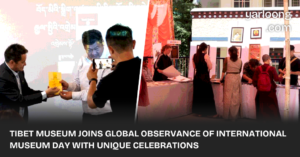It would be quite appropriate for a college professor to assume students know that a tree is alive and a rock is not.
Or would it?
For several summers, I have had the pleasure of teaching biology to Tibetan Buddhist monks exiled in India. This program, called the ETSI (Emory-Tibet Science Initiative), was sparked by discussions the Dalai Lama had with Emory University researchers in the 1990s and has blossomed into a way for monks of all ages to learn about science in the decades since.
The differences between modern biology and traditional Buddhist understandings of nature can seem significant – even in their definitions of what is “living.” Biologists’ understanding of life incorporates animals, plants and bacteria. Traditional Tibetan monastic teachings, on the other hand, base life on the idea of consciousness. Bacteria and animals, including humans, are recognized as having consciousness, and therefore are considered “living” beings. Plants, according to these traditional teachings, do not have consciousness and are thus “nonliving.”
But differences like these have led me to understand what I take for granted in my teaching at the University of Richmond and how much richer learning can be when we step back to explore the most basic – yet biggest – questions together. Thinking about how I would present various topics to the monks has given me concrete lessons to take back to my classroom in Virginia.
Read more on theconversation.com






